Abstract
Operant researchers rarely use the arena of applied psychology to motivate or to judge their research. Absence of tests by application weakens the field of basic operant research. Early in their development, the physical and biological sciences emphasized meliorative aspects of research. Improvement of human life was a major goal of these young sciences. This paper argues that if basic operant researchers analogously invoked a melioration criterion, the operant field might avoid its tendency toward ingrowth and instead generate a broadly influential science. Operant researchers could incorporate melioration by (a) creating animal models to study applied problems; (b) confronting questions raised by applied analysts and testing hypotheses in applied settings; or (c) performing self-experiments—that is, using experimental methods and behavioral techniques to study and change the experimenter's behavior.
Keywords: melioration, self-experimentation, randomness, basic vs. applied research, human subjects
Full text
PDF
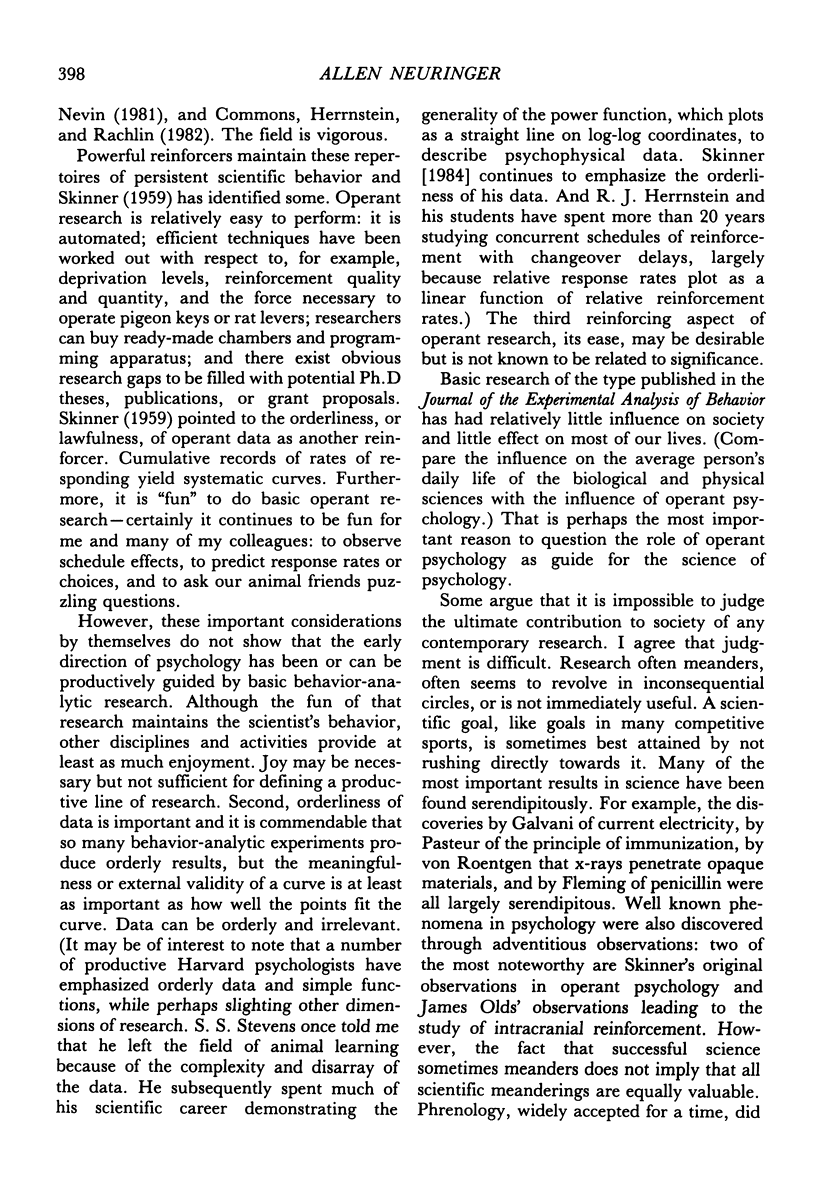
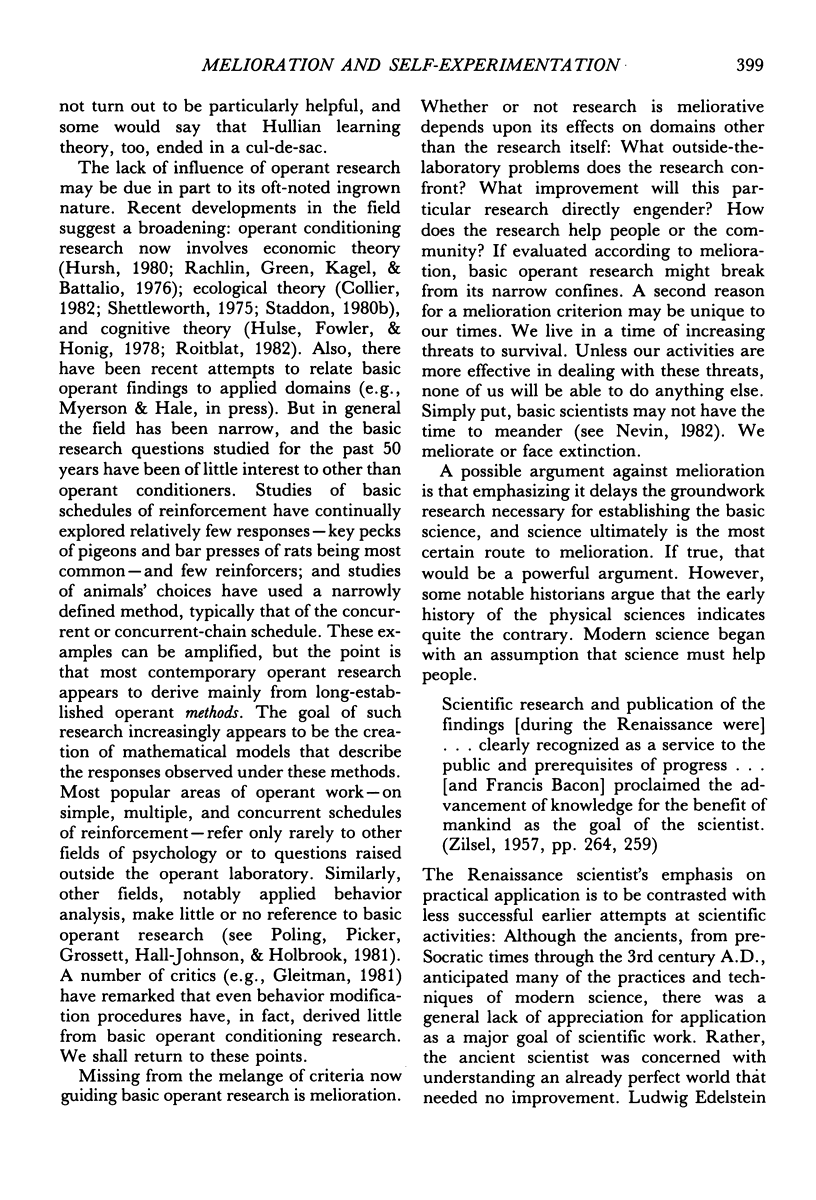
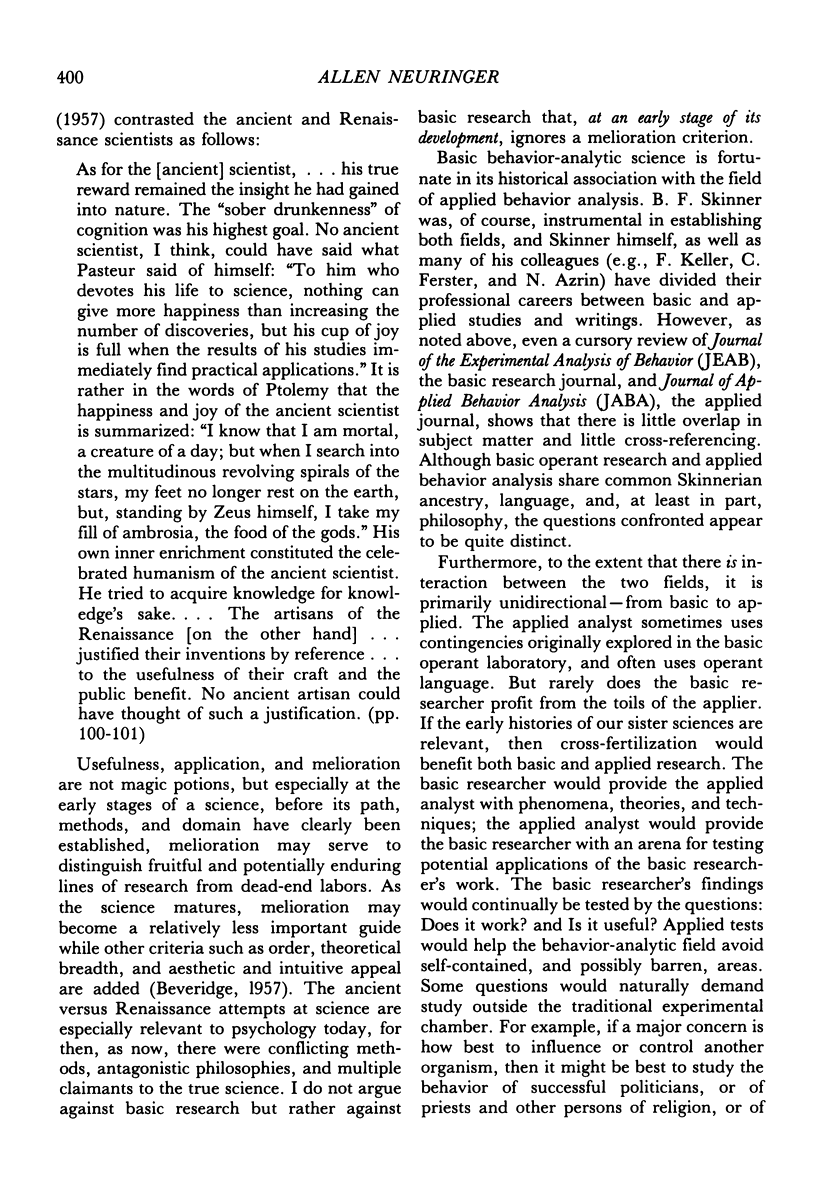
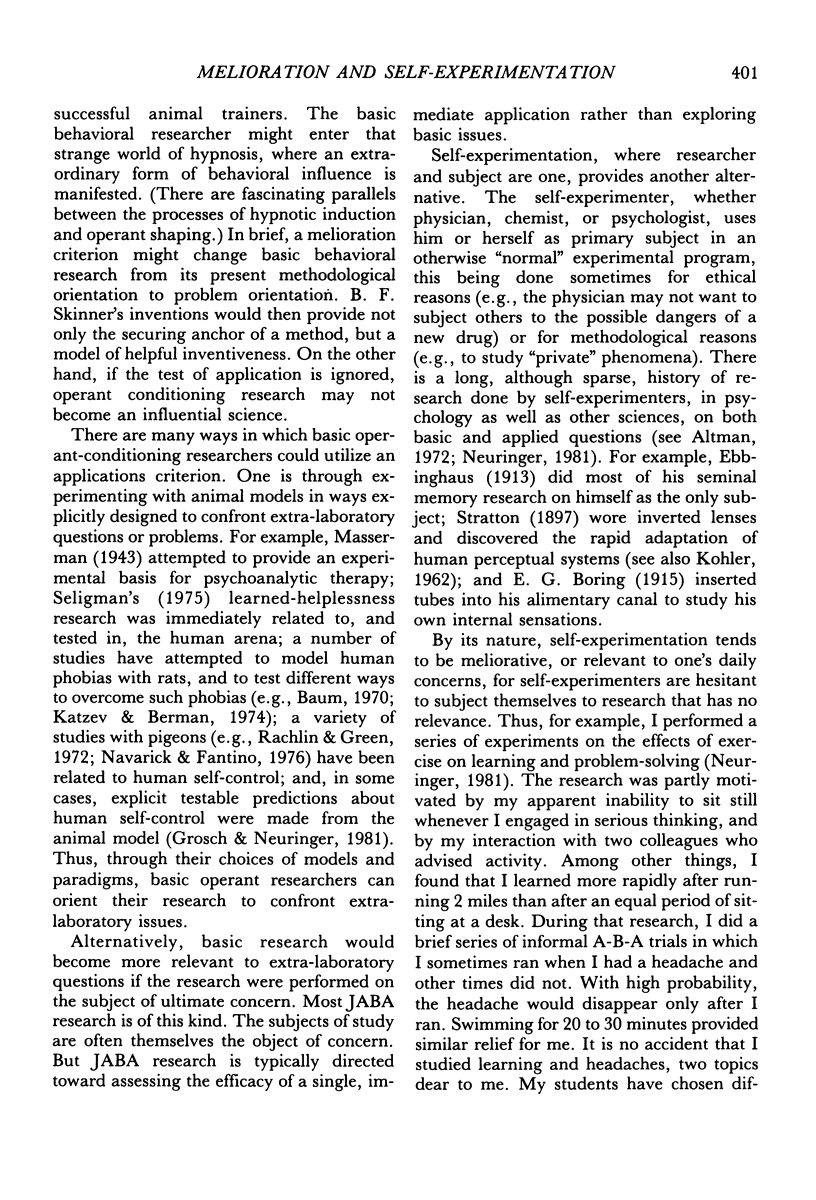
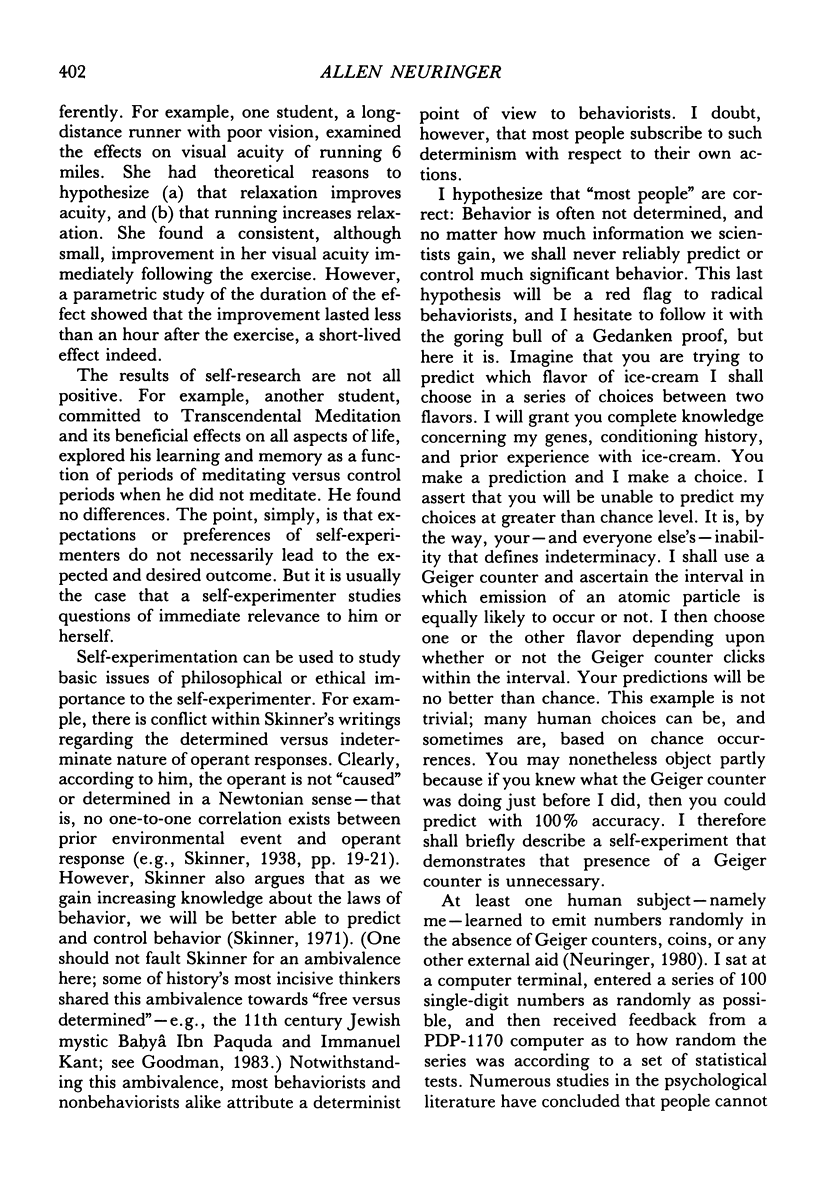
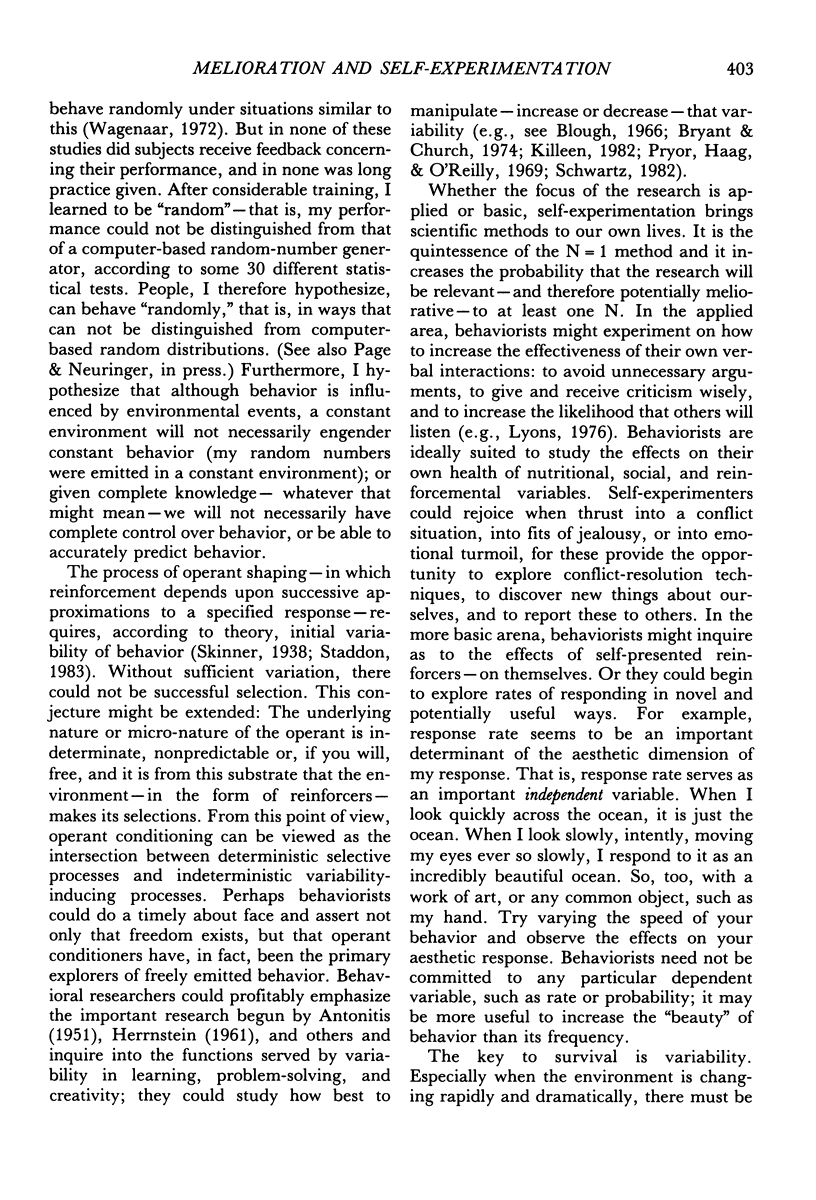
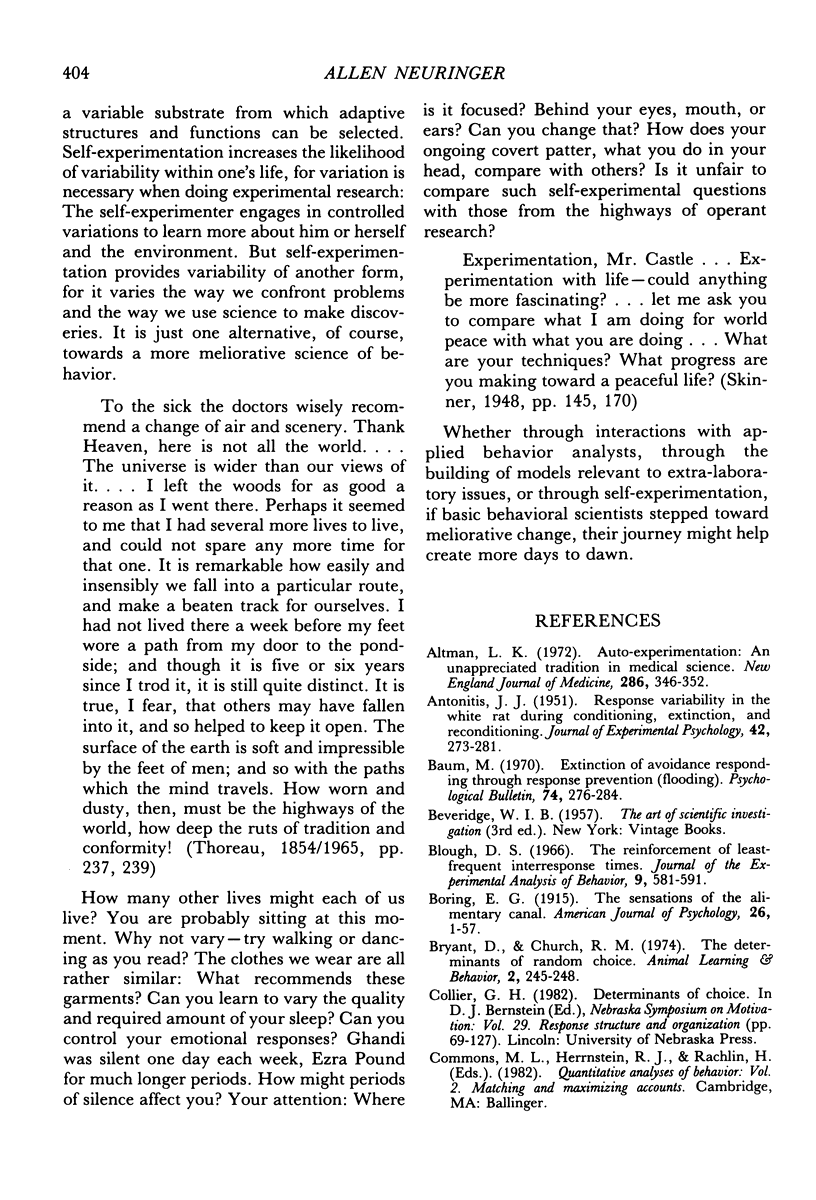

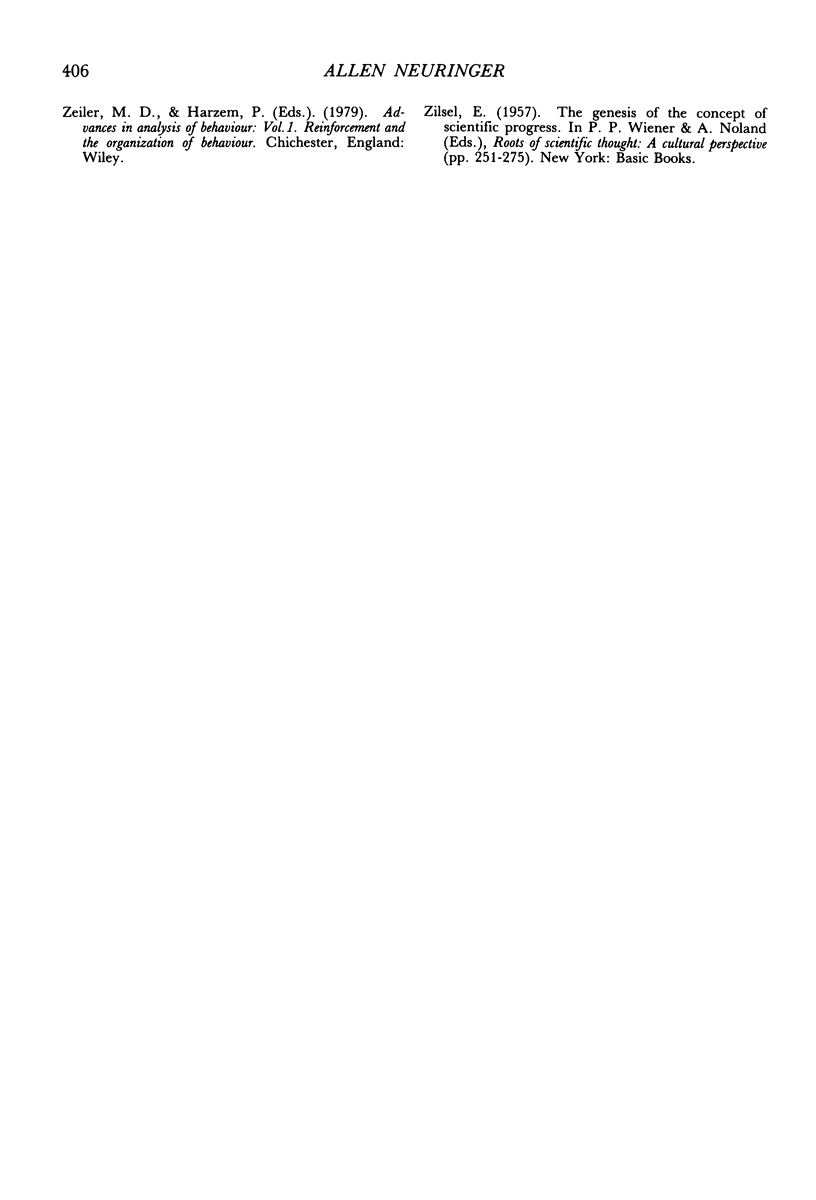
Selected References
These references are in PubMed. This may not be the complete list of references from this article.
- ANTONITIS J. J. Response variability in the white rat during conditioning, extinction, and reconditioning. J Exp Psychol. 1951 Oct;42(4):273–281. doi: 10.1037/h0060407. [DOI] [PubMed] [Google Scholar]
- Altman L. K. Auto-experimentation. An unappreciated tradition in medical science. N Engl J Med. 1972 Feb 17;286(7):346–352. doi: 10.1056/NEJM197202172860704. [DOI] [PubMed] [Google Scholar]
- Baum M. Extinction of avoidance responding through response prevention (flooding). Psychol Bull. 1970 Oct;74(4):276–284. doi: 10.1037/h0029789. [DOI] [PubMed] [Google Scholar]
- Blough D. S. The reinforcement of least-frequent interresponse times. J Exp Anal Behav. 1966 Sep;9(5):581–591. doi: 10.1901/jeab.1966.9-581. [DOI] [PMC free article] [PubMed] [Google Scholar]
- Grosch J., Neuringer A. Self-control in pigeons under the Mischel paradigm. J Exp Anal Behav. 1981 Jan;35(1):3–21. doi: 10.1901/jeab.1981.35-3. [DOI] [PMC free article] [PubMed] [Google Scholar]
- HERRNSTEIN R. J. Stereotypy and intermittent reinforcement. Science. 1961 Jun 30;133(3470):2067–2069. doi: 10.1126/science.133.3470.2067-a. [DOI] [PubMed] [Google Scholar]
- Hursh S. R. Economic concepts for the analysis of behavior. J Exp Anal Behav. 1980 Sep;34(2):219–238. doi: 10.1901/jeab.1980.34-219. [DOI] [PMC free article] [PubMed] [Google Scholar]
- KOHLER I. Experiments with goggles. Sci Am. 1962 May;206:62–72. doi: 10.1038/scientificamerican0562-62. [DOI] [PubMed] [Google Scholar]
- doi: 10.1901/jeab.1982.38-349. [DOI] [PMC free article] [Google Scholar]
- Pryor K. W., Haag R., O'reilly J. The creative porpoise: training for novel behavior. J Exp Anal Behav. 1969 Jul;12(4):653–661. doi: 10.1901/jeab.1969.12-653. [DOI] [PMC free article] [PubMed] [Google Scholar]
- Rachlin H., Green L. Commitment, choice and self-control. J Exp Anal Behav. 1972 Jan;17(1):15–22. doi: 10.1901/jeab.1972.17-15. [DOI] [PMC free article] [PubMed] [Google Scholar]
- Schwartz B. Failure to produce response variability with reinforcement. J Exp Anal Behav. 1982 Mar;37(2):171–181. doi: 10.1901/jeab.1982.37-171. [DOI] [PMC free article] [PubMed] [Google Scholar]


